Nomorobo

I am having a hard time getting started this morning. It is entirely possible that this is associated with the high level of noise from the cocktail nook at Willow last night. It was OK when we were doing it the night before with the Aussies, but this was a alien group who stole all the stools from the bar and backed right up to the apex of the Amen Corner. I couldn’t hear Old Jim growl, and to remedy that problem we presently found ourselves sitting out at the patio with Jon-without, Chanteuse Mary and Gordon the Green Entrepreneur who privately chuckles at the CO2 story. Marvin plied us with live-giving beverages and snacking on Irish Nachos and savory chili from the kitchen.
So I admit I was a little blurry when I rolled out of the rack, and things got complicated from there. It started with nomorobo and went steadily downhill from there. I have to get in the pool before the heavy rains from what is left of Tropical Storm Bill comes through. Getting to the farm is starting to look problematic.
https://www.nomorobo.com/
I would hate to take the afternoon off and just vegetate in my brown chair- we will see what happens.
I have been riled up all week about digital issues. The wholesale theft of our personal data is just part of it. Oh, I know, bank account information, Social Security number, associates, former spouses, yada yada and that troubling matter of what happened in Aurora Colorado in 1977 isn’t something I would willingly have given to the technologists of the People’s Republic of China. Oh well. Life is going to be an open book for a lot of us.
But technology in general has been bugging me. Beyond the threat of financial and professional ruin, I am tired and irritated by the constant stream of robo calls that come on the Verizon FiOS triple-play bundle I got to escape the clutches of those bastards at Comcast. I thought I had signed up for the “don’t call list” years ago, but the land-line that came with FiOS triple-play bundle rings all the time with solicitations. I have to physically restrain the Pavlovian response to pick it up; there is only one person whose call I will answer on that phone, since it has never been associated with work, or things to which I have to continue to pretend to pay attention.
Anyway, checking the morning mail, I sifted through the catalogue of outrages and saw that there had been another court decision on the irritating calls. In a decision this week, the Federal Communications Commission (FCC) voted to officially allow carriers to offer robocall blocking services to their customers!

The message was loud and clear – they are our phones and we should be in control. In a package of declaratory rulings, the Commission affirmed consumers’ rights to control the calls we get- and fine the callers up to $500 a call.
I am no fan of the FCC and am deeply suspicious of the agenda behind their recent assertion of jurisdiction over the internet, but I am cautiously optimistic about this spate of rule-making.
In the package, the Commission also made clear that telephone companies face no legal barriers to allowing consumers to choose to use robocall-blocking technology. Protests related to unwanted calls are the largest category of complaints received by the Commission, numbering more than 215,000 in 2014.
The action addresses almost two-dozen petitions and other requests that sought clarity on how the Commission interprets the Telephone Consumer Protection Act (TCPA), closing loopholes and strengthening consumer protections already on the books. The TCPA requires prior express
consent for non-emergency auto-dialed, prerecorded, or artificial voice calls to wireless phone numbers, as well as for prerecorded telemarketing calls to residential wire-line numbers.
Here is the news you can use:
Green Light for ‘Do Not Disturb’ Technology
– Service providers can offer robocall-blocking technologies to consumers and implement market-based solutions that consumers can use to stop unwanted robocalls. (nomorobo and the carriers can help).
Empowering Consumers to Say ‘Stop’
– Consumers have the right to revoke their consent to receive robocalls and robotexts in any reasonable way at any time. Goddamn right we do.
Reassigned Numbers Aren’t Loopholes
– If a phone number has been reassigned, companies must stop calling the number after one call.
Third-Party Consent
– A consumer whose name is in the contacts list of an acquaintance’s phone does not consent to receive robocalls from third-party applications downloaded by the acquaintance.
Additional highlights for wireless consumers include:
Affirming the Law’s Definition of Autodialer
– “Autodialer” is defined in the Act as any technology with the capacity to dial random or sequential numbers. This definition ensures that robocallers cannot skirt consumer consent requirements through changes in calling technology design or by calling from a list of numbers.
Text Messages as Calls
– The Commission reaffirmed that consumers are entitled to the same consent-based protections for texts as they are for voice calls to wireless numbers.
Internet-to-Phone Text Messages
– Equipment used to send Internet-to-phone text messages is an auto-dialer, so the caller must have consumer consent before calling.
Very Limited and Specific Exemptions for Urgent Circumstances
– Free calls or texts to alert consumers to possible fraud on their bank accounts or remind them of important medication refills, among other financial alerts or healthcare messages, are allowed without prior consent, but other types of financial or healthcare calls, such as marketing or debt
collection calls, are not allowed under these limited and very specific exemptions. Also, consumers have the right to opt out from these permitted calls and texts at any time.
Today’s actions make no changes to the Do-Not-Call Registry, which restricts unwanted telemarketing calls (but didn’t work to block the constant irritating calls), but are intended to build on the Registry’s effectiveness by closing loopholes and ensuring that consumers are fully protected from unwanted calls, including those not covered
by the Registry.
If you want more details, just do a search for “FCC robocalls” and you can read all the stories about it.
So, naturally I went to Verizon to see what I could do about getting set up to reject robocalls. It was not an easy experience for a confirmed Luddite like myself.
I don’t use their email, never set up the voicemail, forgot my username and password, blah blah blah. I waded through all that and attempted to set up nomorobo, and learned a lot. There is an option to have all your phones ring at once. That is the disturbing phenomena I noted last week- is someone screwing with me? Well, you can set up your phones to do that. I have no idea if someone is doing that to me. There is an option buried deep in one of the sub-menus to “stop unwanted calls” and I have selected that option.
If this is not an issue for you, more power to you. If you find it as intrusive as I do, nomorobo might be something you want to check out.
I was pecking at this when the phone went off shortly after 1100. The screen on the phone glowed “Unavailable” as the source of the call. It rang exactly once and went away. Huzzah- the technology works! And with the election still more than a year away, this could be a life-saver!

Copyright 2015 Vic Socotra
www.vicsocotra.com
Twitter: @jayare303
When Worlds Collide

It was cheerful anarchy at Willow last night. Partially Australian
anarchy, though the group was civil even as it became more
lubricated and efficient.
It was a George Costanza episode of Seinfeld- the one in which
worlds collide. There were senior Naval Intelligence People, and
the 18 bright and personable students from Down Under, and the
usual suspects at the Amen Corner, and a bunch of new people
packing the bar for the special limited release beer night.
Fred had brought the group up to get dipped in DC and the
culture of national security as it is practiced here in
Baghdad-on-the-Potomac, and for most it was the first encounter
with our strange little hot-house, one-industry town.

At the bar, the offerings included a great line-up from Stone Brewing Company: three tasty IPAs, a Ruination Double IPA, and Mutt Brown Ale. The Aussies were most happy about it, that and Willow Burger sliders, crafted from house-smoked local beef, smoked Cheddar cheese, pickled red onions and Dijionaise sauce, Tracy’s famous BBQ wings, house smoked, dry-rubbed and fried, and then the tasty Baja-style Fish Tacos.
Heather had reserved the cocktail nook at the front of the bar, and that would have been fine except the special beer event filled up the middle of the bar and the two groups began to flow toward each other, filling up Old Jim’s personal drinking space, which can be a dangerous thing to do.
The monster thunderstorms that swept through town forced everyone in, severely (though temporarily) increasing the specific density at the bar. It was an impressive storm- which knocked out traffic lights and some of the electricity, but thankfully not at Willow.
Frankie the new bartender from Michigan, Jasper, Marvin and Brett held down the taps and poured the drinks with wild abandon. Finally it was dry enough for people to venture back out onto the patio, and the crush lessened.
The seniors from the intelligence side of the house were generous with their time and the students were polite and curious. A great event. The worlds indeed collided- the regulars wound up talking to the Aussies, the Aussies talked to everyone and the beer and food were plentiful.
I think we all got something useful out of it- from my perspective, I love hearing the views from of the young people of a nation that looks north to the Equator. Things are strange all over, you can almost hear the tectonic plates of history grinding away at each other in the South China Sea as China flexes it’s muscles.
Life does not get better than the session at Willow with worlds colliding and all. After the sad events of the day reported from South Carolina, it was just what we needed. Honestly, the world is giving us some sad and interesting challenges these days.
Copyright 2015 Vic Socotra
www.vicsocotra.com
Twitter: @jayare303
Truth or Consequences
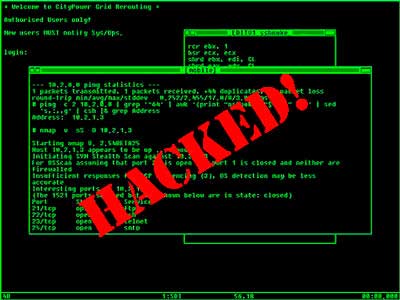
I would really like to escape this sorry century and get back to something with a heroic scope and real consequences. I am on pretty solid ground so far, but I need additional information my Great Great Grandfather’s whereabouts after the Union humiliation at the Battle at Brice’s Crossroads, where the family DNA was saved from abrupt termination, and how GG Uncle Patrick got back in the fight against the Yankees at Peachtree Creek under mad Texan John Bell Hood.
Both of their service records are on their way form the National Archives, so expect more presently on the story of love and war.
I got sidetracked today with an inquiry from a staff writer at a major metropolitan newspaper. He was looking around for information and context and ran across the Socotra piece yesterday. He wanted to know the consequences for his audience so he could do an informative article, and wanted to know if I would mind chatting.
I had the time, and agreed. We explored some of the issues that are in play, considering what we know. I am not saying the Government is lying to us all, but they are certainly underplaying the full consequences of what happened in cyberspace, particularly as it applies to personnel in the Armed Services.
After giving him my bona fides, I said: “The technical term is that we are completely screwed.”
I am not alone in that assessment. The scope of the damage is still being investigated, of course, and the natural inclination of any bureaucracy is to defect blame. But if what we have been told is true, and the applications for security clearances in the Government have been compromised, along with the medical records of nearly half of all working-age Americans, we have got a real problem on our hands.
Several pals- grizzled veterans of the information operations and IT communities- chimed in with vigor and opened up some vistas I had not considered.
My pal in Tidewater said he had been talking to someone yesterday, and together they decided that the real issue is that, from a security perspective, you now have to assume two things:
1) The Chinese penetrated every data base (at least the unclass ones, but if you were prudent, you would assume all them, including the classified ones), and:
2) That they have spent a little time selectively corrupting some files. So, in short, not only can you not trust the system, but every single thing you pull from it is now suspect.
That was my feeling from the beginning, and that the matter of public trust is the first casualty in this active and hot cyber war.
And, of course, to extract this much data is not a matter of ‘dialing in,’ it is a matter of gaining access and leaving behind software that provides for data ex-filtration. We now have to assume that everything is tainted. Not that this is unexpected. As our pal who ran the NSA a couple cycles ago once he was in an information-security job on the outside noted a while ago, every corporate data system his people inspected- 100%- had been attacked and successfully hacked by the Chinese.
There were only two categories of companies- those that knew they had been hacked and those that were not aware of it yet.
All that is just on the commercial side, which includes identify theft for everyone whose social security number has gone missing, and fraudulent tax filings and all sorts of ordinary misery. That includes the Supervisory Control and Data Administration Systems (SCADA) that operate our infrastructure, including the electrical grid. Yike.
That would be bad enough, but there is much more that edges over into the matter of national survival.
My pal Santa passed along something from StratFor, the private intelligence analysis firm. I am not a huge fan of the company, but they hit this one right on. This has outed, at a stroke, the entire military counterintelligence community. What’s more, their opinion is that people in the government may not be the first targets. The hackers may be looking for ethnic Chinese first, in order to turn the screws. That is a classic modus operandi for their espionage services already.
I am sure there will be the usual cries of protest about profiling, even though it is completely valid. I have no answers for that, which is why Granny at the airport gets the pat-down in her wheelchair by TSA.
So what do we do?
My Tidewater pal says we need to start with three things:
1) We need to look into a law forbidding Chinese manufactured electronics (which, by the way, means all those neat attachments to all our smart phones, the chargers, the connecting cables to move pictures, etc., (all made in China) anywhere near USG systems or contractors.
2) we need to harshly punish folks in the USG to make a statement.
3) we need to work out a plan to retaliate – and then execute.
My pal at Mountain House mused that President Obama is considering considering retaliatory options, though he doubts that anything meaningful can be done. I mean, what would we do with a billion Chinese social security numbers?
In cyber warfare, he said, the advantage currently lies with the offense. That suggests the Chinese are vulnerable too. I know of several ways we could burn them, but all might be considered escalatory. I’m not sure tit for tat is enough, though.
This is so bad that I am pretty sure no one is going to acknowledge it. And that means we are in really, really deep kimchi. That is the truth, and we are going to have to live with the consequences.
Copyright 2015 Vic Socotra
Twitter: @jayare303
Crosshairs

(Chinese computer experts at work. Image from China Defense Mashup).
Sorry- I can’t quite seem to let this thing go about the Chinese gaining access to my government security files. I tossed and turned in the night, and had a dream in which a laser dot was playing around on my chest, and I did not know who was doing the targeting.
Paranoid? Well, they say you only are if in fact they are not out to get you.
There is some seriously crazy stuff going on. I have not got my letter from the contractor fronting for OPM about the data breach. I looked for it in the mailbox yesterday- of course they are sending the letters out in snail-mail- but so far nothing. The people in charge of these things are being quite vague.
There seem to be ominous portents abroad in the land, and I don’t know what they mean.
For example, at 0648 this morning, all three of the phone lines in my apartment rang simultaneously. That included the land-line that came with the Verizon FiOS bundle (that I don’t use- too many solicitation calls) and the Blackberry only used for conference calls, and my cell phone, which is my primary connection to the world.
Simultaneously . Really weird. Figure the odds of that, I wondered. I was not quick enough- or smart enough- to not click on the cell phone, but I did not speak. I was just puzzled at the phenomenon when it occurred, and then I realized it was undoubtedly a robo call of some kind- but why at the same time?
Then I felt a chill. Of course- some database was being pulsed and it contained all my numbers- including ones that are almost never used.
That would suggest that the data is now in multiple hands; since the folks in Peking wouldn’t be pulsing the whole data load, but there are a lot of other folks on the dark web who would.
So, where has all this data gone — who else now has it?
If there was ever a case demonstrating the inability of Government to stay ahead of commercial technology- also used by the hacking community- this is it. Consider how long this has been going on:
Jul . 2014: OPM investigates a breach of its computer networks dating back to March 2014. It assures employees “no personal data appears to have been stolen.”
Aug. 2014: A company providing background checks for DHS is hacked, compromising 30,000 DHS employees though an exploit on an enterprise management software product from SAP.
Nov . 2014: OPM’s Inspector General finds “significant” deficiencies in the department’s IT security.
Dec. 2014 : OPM vows to notify 48,439 federal workers that their information may have been exposed in an attack conducted on a subcontractor to the company hacked in August.
Feb. 2015: Health insurance giant Anthem is hacked nearly 80 million customers.
Mar. 2015: Former Secretary of State Clinton deletes information on the private server at her home in New York. Cyber security experts indicate the server may have been vulnerable to Chinese and Russian hackers while she used the system for official government business.
May 2015: Premera Blue Cross discloses a breach affecting 11 million customers. The incident exposes clinical medical information in addition to personally identifiable information.
May 2015: Carefirst Blue Cross discloses breach impacting 1.1 million customers. Forensic examination indicates the same exploit used in the Anthem and Premara breaches is used.
May 2015: The IRS reveals that tax returns for 110,000 taxpayers were compromised.
Jun . 2015: OPM discloses breach affecting up to 4 million federal employees. Follow-up reports indicate that the breach may extend well beyond federal employees to individuals who applied for security clearances with the federal government, bringing the total to more than 14 million government employees and contractors.
The help from the Government has been to offer credit monitoring for periods ranging between 18 months and two years. After that we are all on our own. To my knowledge, no one has been fired or formally reprimanded for putting us all at significant risk of ruin.
My math is a little rusty- but if there are around 305 million Americans, and according to the Organization for Economic Co-operation and Development (OECD) , 67.4 percent of us are between the ages of 16 and 64. That means that there are 205.4 million working age citizens.
Adding up the number of people compromised in the breaches, a little more than 106 million records- more than half of all American working people- have had the details of their lives shipped off to Guangdong Province. That may also include all the official email used by the US Secretary of State.
There is a fair amount of coverage of the story, but it is muted. Too hard to understand? There are no stunning videos, chanting marchers or anything really sexy to display, and the stories have been relatively low key. But this is the story of the century so far.
Where is the outrage? Why has no one been fired? Why have we not done something? This is an act of war, my friends.
With the continuing revelations of gross digital incompetence, I am getting the creeps. Do you get the feeling that most of us are walking around with digital crosshairs glowing on our backs.
I don’t know about you, but I am not sure 18 months of credit monitoring for those of us who were betrayed is an adequate response. I really liked the suggestion that a smoking kinetic hole might be a way to start.

(Cartoon from the Economist, drawn by Guido Munoz).
Copyright 2015 Vic Socotra
www.vicsocotra.com
Twitter: @jayare303
My Two Cents

As you are probably aware, I am not shy about sharing my opinions about things- realizing that opinions are like sphincters and everyone has at least one of them. I rose at the farm today, a bit late, since I was beat from cutting the pastures and lawn and trimming the brush back from the satellite dish.
There seems to be no imperative to set the alarm down here, and the sultry weather has caused me to crank up the air conditioning and the bed is exceptionally welcoming.
I will have to get back up north and check the mail. All my friends are reporting the receipt of nice letters from the good folks at the Department of Homeland Security. They appear to be right on the ball. One colleague reported that he had called them to verify that the letter was real, since we are now through the looking glass and cannot trust anything or anyone.
Actually, that was true before we found out about the hacking, but I digress. My pal said: “ The individual with whom I spoke, after waiting ten minutes on hold, confirmed that DHS did in fact send the letter, which contained this explanation: “A private contractor used by DHS to conduct pre-employment credit checks, may have been compromised.”
That is an interesting take on something that in my day would have been what we called an “inherently governmental function.” Apparently the letter goes on to offer credit monitoring and identity theft insurance. According to the woman with whom my pal spoke, “this breach may affect anyone with an active or past security clearance. Just my two cents, but I think the source of the hack should be identified immediately and shortly after identification become a radioactive, smoking hole, no questions asked.”
I completely agree, and enjoyed the use of the term “two cents,” which resonated powerfully. When I was at that marvelous dinner at The Inn at Little Washington on Saturday night, I was presented with a gift from the Webb family that humbled and pleased me. As the activity in the bustling kitchen went on around us, I opened the little black case and whistled in amazement. It was a pair of cufflinks crafted from brilliantly polished two-cent coins.
Tom told me about their provenance: “ The two-cent piece was only minted between 1864 and 1872. The economic turmoil of the Civil War caused people to hoard silver coins and there was a crisis in the commercial sector. The cent at that time was struck of a copper-nickel alloy, the same diameter as the later Lincoln penny, but a little thicker and harder for the Philadelphia mint to produce.”
I was a little embarrassed by the generosity of the gift, but frankly the cufflinks are perfect for the formal events I attend with the French Cuffs, and the theme of them is perfectly in synch with where I have been spending a lot of my time lately, in the relative safety of the 19th century.
Tom explained: “what jumped out at us was the date the coins had been minted- 1864. We thought it would be perfect for you.”
I nodded in agreement and peered closely at the coins, marveling at what they had purchased in their day- cigars? Candy? Whose pockets had they been in? Could my ancestors have fished them out of heavy woolen uniform trousers and slid them across the bar for a shot of whiskey or a refreshing mug of beer?
As discerning readers have noticed, 1864 was the year that fate decided to let Great Great Grandfather live through the Battle of Brice’s Crossing, and probably the year that he decided to go AWOL from the Union, marry Great Great Grandmother Barbara, and sire the line that gave life to me.

That is the love story I am going to weave into the Civil War epic- but I am getting on thin ice. I need to nail down some dates to confirm what and where the family actually was in 1864. I was going to continue the story of the 72nd OVI from there, but decided on another approach.
Doc wrote from his home on the mountain in Arizona to ask if there was a means to get a copy of the military records of his great grandfather, who had been a destroyer sailor in The Great War. In the process of crafting my response, I went to the National Archive site (http://www.archives.gov/) to confirm the details of the process.
So long as I was there anyway, I ordered a copy of both James Foley and Patrick Griffin’s records. I did not have to provide any legal reason for the request, so in a way it is just like the Chinese hackers who got all of us.
Of course, James and Patrick are not in a position to do anything about it, but then, apparently neither are we.
I have to agree with my pal’s recommendation: smoking radioactive hole. Soon. Just my two cents, you know?
Copyright 2015 Vic Socotra
www.vicsocotra.com
Twitter: @jayare303
The Inn at Little Washington
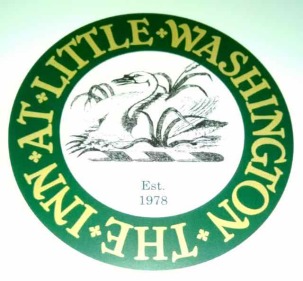
This life thing is kind of ephemeral, you know? We all got dragged into cyber hell yesterday, the political circus, all that. Time to carpe diem- seize it with both hands and wring all the life out of it while we can.
But for all that, there are some things that seem to transcend it all. The Inn at Little Washington is a place that makes time and space seem as ephemeral as we are.
Dining there has always been on the bucket list for things to do in NoVA, but it is an extravagance that I couldn’t really justify as I confront the imperative of transitioning from busy-busy Washingtonian to equally busy- but unpaid- semi-retirement. My friends have been going to the Inn for years as a way-point between the Mid West and the Outer Banks where they vacation.
Donna is the vivacious daughter of one of the great friends of my life, Admiral Mac Showers. Tom is her husband, an ebullient raconteur and enterprising capitalist with an engaging curiosity about the history that has brought us all to this place in the world. Ashleigh is their marvelous daughter, and always a delight to be with.

They were kind enough to extend an invitation to join them at The Inn, and it was an extraordinary experience. The day was the usual frantic process of creating digital words, and I realized the tyranny of time and distance had its own imperative. I got a swim in at the Big Pink pool and then jumped into some presentable clothing and off in the Panzer to the wilds of Rappahannock County, feeling the madness of Arlington and Fairfax slip behind me and the road gently winding and curving to Washington, VA.
It is hard to describe the ambiance of the place. The town is beyond painfully cute. It could be Brigadoon, frozen in 1796. The Inn itself is a big block of a building that has grown with the evolving restaurant. It is a maze of little rooms, each with an eclectic ambiance all their own. We chatted for a while with a cocktail, and then were ushered back to one of two tables actually in the kitchen by Chris Castle, whose business card bears the well-earned title “Ringmaster.”
The entire process was mind-boggling.
Owner and founder Patrick O’Connell was abroad on culinary business, but he has created a smoothly functioning machine of 150 people who work in perfect harmony. He can step away for a moment and the mechanism will continue to function like a fine watch.
Patrick describes his masterpiece this way (I bought his cookbook to prepare myself for the experience):
“ For some The Inn is a romantic fantasy world far removed from the harsh realities of modern day life, for others it’s a culinary oasis akin to visiting a Michelin-starred restaurant in the European countryside. Some are surprised – and relieved – that The Inn doesn’t take itself too seriously. Guests often remark that while the interiors could be called grand they are also whimsical and wonderfully comfortable.
For history lovers Washington, Virginia is one of the few unspoiled villages left in America. They say it hasn’t changed much since George Washington first surveyed it and named the streets back in 1749. Whatever you’re seeking rest assured that our staff will welcome the challenge of living up to all of your impossible expectations. We consider it our business to make dreams come true.”

(The kitchen of The Inn at Little Washington from the vantage of our table. From the menu cover.)
Our entrance into the kitchen was another in the string of wonders, a sacred secular ritual all its own. One of the sous chefs was robed like a Cardinal and waved a censor of incense before us. Patrick, after all, is known as the Pope of American Cuisine. A soundtrack of Gregorian chants wafted from the beams above as we were seated in a corner of the bustling working space.
The service was attentive, courteous, engaged and unfailingly polite. Chris is the personable hub around which the organized chaos revolves- the “ringmaster” indeed. The sommelier- Leo? Hugo?- was a constant but un-ubiquitous presence. Tom had arranged three bottles of Bordeaux from an estate in France, each bottled a decade apart in 1986, 1996 and 2006. The Parker review had them each rated between 98 and 100+, and they were a rich delight on the tongue. The evolution of the wine through the years was extraordinary to experience, and the glasses never got quite to the bottom.
The food was presented amidst the bustle of a working kitchen in tapas-sized dishes and extraordinary in the diversity of taste and texture- and the thing that completely avoided pretense while adhering to the most rigorous of preparatory rites: whimsy.
We started with a small portion of popcorn, with chocolate truffles shaved on top before our wondering eyes, and then eaten with fingers. It served to set the tone for the experience: elegant but casual.

We plucked the mini- taters stuffed with source cream and chives, topped with a sprinkle of American caviar the same way. Then to the intricate parade of dishes:
A shot of chilled watercress soup;
A quartet of “Wellfleet” oyster slurpees;
Filet of Antarctic Sea Bass with Lemon Vodka Sauce, miniature shrimp and Pork Dumpling;
Hickory-glazed Kurobuta pork jowl with collard Greens;
Aged Gouda Macaroni and Cheese with Virginia Country Ham
Peking Paradise Duck Breast with sour cherries from their orchard, wild rice pecan pilaf and Inn-grown garden turnips;
a delicate sorbet to cleanse the palate, then:
A magnificent cherry tart with French press coffee.
Our host thought an after-dinner drink was appropriate, and we settled on Bailey’s for her, rocks, and for himself and me, 2 ounces of 23-year-old Pappy Van Winkles Family Reserve Bourbon.
I had never tasted any of this stuff, or better said, never tasted it the way it was prepared and served with an element of pure joy. The last of the light was fading as we slowly walked back through the maze to the parking lot.
The Webbs saw me off in the growing country gloom. They are smart- they are staying there for the night. I thought the 30-odd miles down Rt. 211 would be calm, but the high-beams of oncoming traffic and the undulating blacktop and snake-like meandering of the road through the low hills in the increasingly inky night got my attention.
I successfully navigated to Culpeper and through the Saturday crowd in town and was at the farm a little after ten, way past my bedtime, but the French-press coffee served me well enough. I made a mental note to really get serious about replacing the burned out security light, and had to find my flashlight in the go-bag in the trunk to find the slot in the lock on the front door. Once the lights were on, and the computer set up, I poured a generous drink of the cheap stuff I drink and sighed.
That was one for the ages. Best company. Best meal of my life.
Copyright 2015 Vic Socotra
www.vicsocotra.com
Twitter: @jayare303
The Luckiest Man Alive

Friday was a big day at the Pentagon’s JCS J-2 Spaces, and I thought I would pass this along. I want to ensure that you know that one of our best is facing the fight of his life, and as he always does, he is taking it with upbeat optimism. It was the occasion of RADM Paul Becker’s last day on the job (for a while) as the Intelligence Officer for the Chairman of the Joint Chiefs of Staff.
Paul will be starting bone marrow transplant therapy at Walter Reed Hospital at Bethesda next week to vanquish a particularly virulent form of cancer.
Following is a summary of his short farewell comments in front of his Joint Staff Teammates. Paul is one of the class acts in our business, and it is worth passing them along as his friends keep him in their hearts and prayers.
“In order to have a successful tour, you’ve gotta be part of a successful team … and the JCS J2 organization isn’t just a successful team, it’s the ‘Gold Standard’ of intelligence organization…exemplars of ‘Teamwork, Tone and Tenacity’
It’s been 75 years since one of my all-time favorite speeches was delivered by the immortal Lou Gehrig. He was a ballplayer so indomitable that he was called “A Gibraltar in cleats.” It’s worth using his brief but humble remarks in the context of why I consider myself one of the luckiest guys alive: “…Look at these grand men. Which of you wouldn’t consider it the highlight of his career just to associate with them for even one day? When you have a wife who has been a tower of strength and shown more courage than you dreamed existed – that’s the finest thing I know. I may have had a tough break … but today I consider myself the luckiest man on the face of this earth.”
“Thank you, with Pentagon Aloha, Paul.”
It is hard not to include some of the rest of Lou Gehrig’s remarks to amplify the way we feel about Paul. “When the New York Giants, a team you would give your right arm to beat, and vice versa, sends you a gift – that’s something. When everybody down to the groundskeepers and those boys in white coats remember you with trophies – that’s something. When you have a wonderful mother-in-law who takes sides with you in squabbles with her own daughter – that’s something. When you have a father and a mother who work all their lives so you can have an education and build your body – it’s a blessing. When you have a wife who has been a tower of strength and shown more courage than you dreamed existed – that’s the finest I know.
“So I close in saying that I might have been given a bad break, but I’ve got an awful lot to live for.”
We will be pulling for Paul in this tough fight. We have had another comrade- one of my heroes- confront this same grim specter last summer, and he won. So the cancer better take note: Paul is going to kick its butt.
-Vic Socotra
You’ve Been Breeched
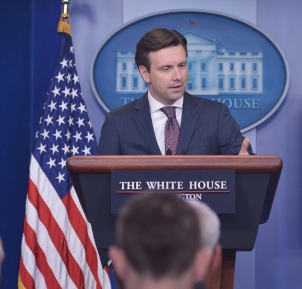
(Press Secretary Josh Earnest does damage control on the OPM data breech that left a lot us breeched).
I would have returned to writing about the 72nd Ohio Volunteer Infantry wandering around Tennessee and Mississippi a century and a half ago this morning. It is much safer back there, but my attention was drawn to other matters this morning.
My pocket got picked. If you are a colleague or a government worker, it is highly likely that yours was, too. Millions of us.
Wired magazine contends that the way things work these days is this: “Every big hack discovered will eventually prove to be more serious than first believed.”
That certainly appears to be the case in the latest complete Government IT screw-up. First reports were pretty alarming: perhaps four million government workers had their Social Security numbers, birth-dates and addresses of current and former federal workers compromised. It was worse. Much worse.
Attribution of the attacker’s identity is always the hardest part of these things, but is looks like Chinese hackers accessed the bane of the Government worker’s life, the Standard Form 86 (SF-86). You need to complete one of these to get a security clearance adjudicated, and it contains the crown jewels of your life: not only all your personal information, but also data about friends, spouses and other family members.
The Government response has been muted- there is a lot to be embarrassed about. DHS had been claiming that the new EINSTEIN detection program was responsible for uncovering the hack. Nope, not so. It was a sales demonstration by an Internet security company called CyTech Services that noticed it.
“Say, are you aware that there is a malware program operating on your system?”
“Um, really?”
This morning they are saying that as many as 14 million files were compromised. And the SF-86s include financial information, detailed employment histories, criminal history, psychological records and information about past drug use. Since we don’t know the extent of the breech, there is possibility that there might be detailed personal information from polygraph exams, which depending on the Agency conducting it, can confessions of law breaking and sexual history.
The OPM had no IT security staff until 2013, and it shows.
A pal who (probably) also had his data stolen wrote to say “What is truly pathetic is that this kind of thing has been in discussion for so long – I personally participated in some talks on this in 1997, and the vulnerabilities were all discussed – nothing in that sense is new. Still, no one fixed it.”
So, OK. What is one to do about being suddenly so vulnerable? And vulnerable to what? Counterintelligence matters have been mentioned- information that could be used to blackmail or target individuals with clearances. Another pal remarked, a bit wistfully, that he was hoping for a lovely Chinese woman to show up on his doorstep and attempt to get him into a compromising position.
I have to agree, but I am not particularly alarmed about honey-pot operations to uncover ancient secrets- I think Chelsea Manning and Edward Snowden took care of anything that I might have known that was interesting to a hostile service. I am more concerned about the financial end of this- no one on the edge of retirement needs ruination.
I purchased a credit protection plan the last time one of these breeches occurred, and went back this morning to see if it was worth the effort to continue paying for it. Some facts about what works and what doesn’t is at this link, and you can make up your own mind.
I have a suspicion that a lot of financial data has been sold to the dark web already. So, take the usual precaution about not taking things for granted with people who may want to target and compromise you.
I don’t know if there is a connection, but the breech has been going on for months, if not longer, and the spear-phishing attacks see to be getting more sophisticated. You know about phishing- a hacker uses some credible bit of information to get you to believe it is a legitimate inquiry and you provide the information they desire. While I still get requests to claim my millions from the Nigerian Banker, or update account information from banks I have never dealt with- I am now getting a number of them directed at accounts that I actually use. More than would be by random chance.
I have the gnawing feeling that there is a connection between the data breech and attempts to specifically target people with bogus mail from institutions that they know have active accounts. So, never click on a link contained in an email. They already know all your stuff and would never ask for it again unsolicited. Open a new browser window and log on to the official sites as a matter of course if there is any doubt.
I also decided last year that I had plenty of credit and since I don’t pay a great deal of attention to my statement activity, so I went ahead and placed a freeze on my accounts at Experian, TransUnion and whatever the third one is. Since most lenders require a credit check as a condition of opening a new account, a “freeze” will normally result in an identity thief’s request to open a new account in your name being denied, and you will be notified of the attempt. It costs $10-20 bucks (of course), and varies in duration; one of them expires after seven years. You have password access to temporarily lift the freeze if you want to finance a purchase.
Here is a link to the process.
Finally, and I will stop the geezer advice to you tech-savvy folks with this: I recently got my first replacement credit card with an RFID chip embedded in it. There is a lot of misinformation about how hard or easy it is to steal the information from the chip, but most conclude that multiple cards in the same purse or wallet do not cancel each other out, they can be “read” by the right device in seconds, and any unshielded card is subject to compromise be a scanner within a couple feet.
The banks started putting the chips in passports about five years ago, which is why I hastened to renew one WITHOUT the chip. I will get sucked into a new one next year whether I like it or not, so the question is how you protect your data. There are shielded wallets out there, and I just ordered one, since I felt like an idiot folding up some aluminum foil in my existing billfold.
I am sure you have already thought of all this stuff, but with the threat now exposed, and the Government’s response so timid, I thought I might pass along some options defend ourselves against the bad guys.
Certainly the Government isn’t going to do it for us, you know? They actually appear to be the problem.
Copyright 2015 Vic Socotra
www.vicsocotra.com
Twitter: @jayare303
Hell On Earth
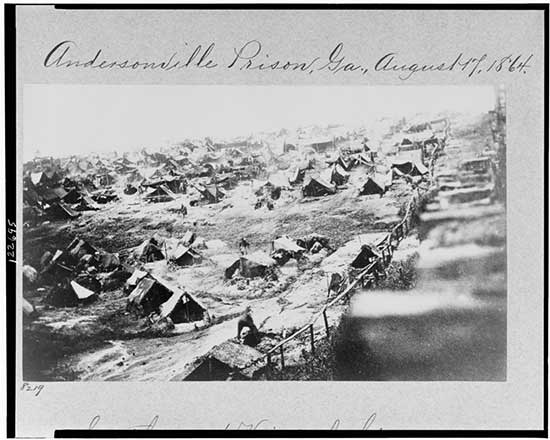
“Can see the dead wagon loaded up with twenty or thirty bodies at a time, two lengths, just like four foot wood is loaded on to a wagon at the North, and away they go to the grave yard on a trot. Perhaps one or two will fall off and get run over. No attention paid to that; they are picked up on the road back after more. Was ever before in this world anything so terrible happening? Many entirely naked.”
— Brigade Quarter Master John L. Ransom, 9th Michigan Cavalry and prisoner at Andersonville. (From John Ransom’s Andersonville Diary by John Ransom, published by Berkley Books.)
“I have read in my earlier years about prisoners in the revolutionary war, and other wars. It sounded noble and heroic to be a prisoner of war, and accounts of their adventures were quite romantic; but the romance has been knocked out of the prisoner of war business, higher than a kite. It’s a fraud.”
—John L. Ransom
Well, I have to say that I have my PowerBall numbers for the foreseeable future. I wanted to write about the battle at Brice’s Crossroads on the anniversary of the day it happened, June 10th, 1864, or 6-10-1864. Great-Great-Grandfather Private James Foley was 19 when he signed up to go to war with Company H of the 72nd Ohio Volunteer Infantry.
151 years ago from my 64th birthday, on 6-10-51. My fighter squadron was VF-151. My favorite rum is Bacardi’s 151. So, that yields a sequence of 6, 10, 18, 19, 51, with the PowerBall number being 64. If we hit it, we can split it, I promise.
But that gets to the nature of luck, and by any standard I am among the luckiest of humans. I live in America, and grew to manhood at the zenith of that lucky nation’s status and well being. That is part of the luck of the Irish, for Great Great Grandfather was lucky not to have been killed outright or captured by the implacable Nathan Bedford Forrest on the pell-mell fifty-five mile retreat from Guntown, or the Battle of Brice’s Crossing as it is known.
Starting with a muster list of nearly 900 men in 1861, the 72nd regiment lost a total of 298 soldiers during it service in the War Between the States. That is nearly one of out three, and included 4 officers and 56 enlisted men killed or mortally wounded, 2 officers and 236 enlisted men died of disease.
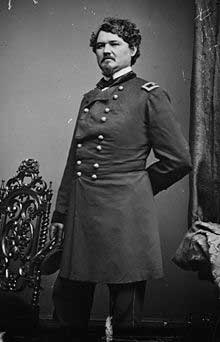
(GENERAL STURGIS. MEN OF THE 72ND OVI DESPISED HIM FOR HIS FALURE AT BRICE’S CROSSING AND THEIR SUBSEQUENT MISERY).
It is that last bit of brevity that covers a more important fact, the reason why troopers of the 72nd were never able to forgive their General that day, Samuel Sturgis. An otherwise model officer, his failure against Nathan Bedford Forrest lead to casualties that included 223 killed outright, 394 wounded, and 1,623 missing, for a total of 2,240. The “missing” may include some Union soldiers who ran off the battlefield and went home. Mostly though, considering they were marching through the heartland of the Confederacy, they were captured.
As we discussed in “Parole,” that was not necessarily a bad thing. Great Great Uncle Patrick was paroled twice (three times if you include the pass to bury his Colonel after the Battle of Raymond) and he survived relatively unscathed. The prisoners at Brice’s Crossing were not so fortunate, and that is the reason that many of the 72nd OVI blamed General Sturgis for their being sent to Hell on Earth.
Hell on Earth in 1864 was a place near the village of Andersonville, or Camp Sumter as it was known officially. It held more prisoners at any given time than any of the other Confederate military prisons. It was constructed in February of 1864 after Confederate officials decided to move the large number of Federal prisoners in and around Richmond to a place of greater security and more abundant food. During the 14 months it existed, more than 45,000 Union soldiers were confined here. Of these, almost 13,000 died from disease, poor sanitation, malnutrition, overcrowding, or exposure to the elements.
The prison pen was surrounded by a stockade of hewed pine logs that varied in height from 15 to 17 feet. The pen was enlarged in late June 1864 to enclose 261/2 acres. Sentry boxes—called “pigeon roosts” by the prisoners—stood at 90-foot intervals along the top of the stockade and there were two entrances on the west side. Inside, about 19 feet from the wall, was the “deadline,” which prisoners were forbidden to cross. The “deadline” (origin of the term) was intended to prevent prisoners from climbing over the stockade or from tunneling under it. It was marked by a simple post and rail fence and guards had orders to shoot any prisoner who crossed the fence, or even reached over it. A branch of Sweetwater Creek, called Stockade Branch, flowed through the prison yard and was the only source of water for most of the prison.
In an emergency, eight small earthen forts around the outside of the prison could hold artillery to put down disturbances within the compound and to defend against Union cavalry attacks.
The first prisoners were brought to Andersonville in late February 1864. During the next few months, approximately 400 more arrived each day. By the end of June, 26,000 men were penned in an area originally meant for only 10,000 prisoners. The largest number held at any one time was more than 33,000 in August 1864. The Confederate government could not provide adequate housing, food, clothing or medical care to their Federal captives because of deteriorating economic conditions in the South, a poor transportation system, and the desperate need of the Confederate army for food and supplies.
These conditions, along with a breakdown of the prisoner exchange system between the North and the South, created much suffering and a high mortality rate. “There is so much filth about the camp that it is terrible trying to live here,” one prisoner, Michigan cavalryman John Ransom, confided to his diary. “With sunken eyes, blackened countenances from pitch pine smoke, rags, and disease, the men look sickening. The air reeks with nastiness.” Still another recalled, “Since the day I was born, I never saw such misery.”
When General William T. Sherman’s Union forces occupied Atlanta, Georgia on September 2, 1864, bringing Federal cavalry columns within easy striking distance of Andersonville, Confederate authorities moved most of the prisoners to other camps in South Carolina and coastal Georgia. From then until April 1865, Andersonville was operated in a smaller capacity.
One hundred of the total casualties to Great Great Grandfather’s regiment happened at Andersonville. It was Hell on Earth.
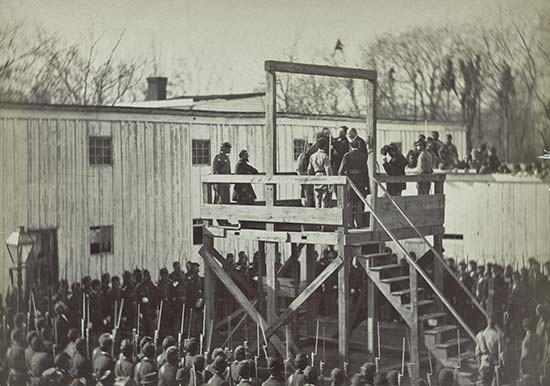
When the War ended, Captain Henry Wirz, the prison’s commandant, was arrested and charged with conspiring with high Confederate officials to “impair and injure the health and destroy the lives…of Federal prisoners” and “murder in violation of the laws of war.” Such a conspiracy never existed, but public anger and indignation throughout the North over the conditions at Andersonville demanded appeasement. Tried and found guilty by a military tribunal, Wirz was hanged in Washington, D.C., on November 10, 1865. Wirz was the only person executed for war crimes during the Civil War.
—With thanks to the Civil War Preservation Trust (of which I am a proud member) and Adapted from National Park Service brochure “Andersonville”
Copyright 2015 Vic Socotra
www.vicsocotra.om
Twitter: @jayare303
Speak of the Devil
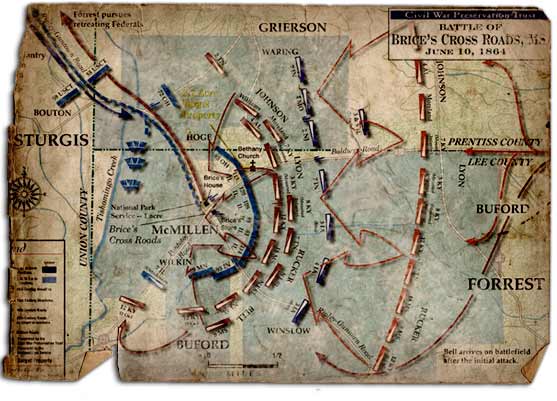
(Map of the encounter between the forces of Nathan Bedford Forrest and Samuel Davis Sturgis at Brice’s Crossroads, MS, on 10 June 1864. The position of the 72nd OVI is along the line of retreat at the upper left center. Map Civil War Preservation Trust).
I don’t necessarily disbelieve in co-incidence- but the battle that almost got my Great Great Grandfather and killed off his line was this day, 151 years ago. Let’s see: I was born on this day 64 years ago and my first squadron was VF-151, and that is the same proof I like my rum.
So bear with me as I tell you all those things got my attention. I do not think I had ever consciously thought about Brice’s Crossroads before I started examining the combat record of the 72nd Ohio Volunteer Infantry.
As it turns out, nothing has changed there since the Crossroads erupted in flame that sultry Mississippi summer day in 1864, this day, in fact- the 10th of June- a Confederate force of less than 5,000 troopers met and destroyed a well-equipped Union expeditionary force of over 8,000 men. It is a personal affair to me, because my existence on the planet is connected to the actions of the two commanders on the field: Nathan Bedford Forrest, the man who Tecumseh Sherman called “The Devil,” and Union Brigadier Samuel Davis Sturgis.
Forrest was all about killing Yankees and had the ability to distill complex tactical situations to the simplest of terms. “War means fighting, and fighting means killing,” was his basic tenet, and he ensured that all of his soldiers understood it. When his force engaged you, he stayed engaged.
Here is the day, as described by historian Parker Hills: “THE MISSISSIPPI SUN LURKED behind a mask of emptied rain clouds in the early morning of June 10, 1864, and then temperamentally burned its gray-white shroud away. Now the sun blazed away like a white-hot disc, seeming stationary in the sky. Desperate soldiers and exhausted dray animals sweated, struggled and suffered in the knee-high cornfields and the chafing brush of the scrub-oak woods, With agonizing deliberation the sun crept across the heavens, and almost every living creature on the battlefield eagerly anticipated day’s end — almost. With eves blazing and temper raging, Confederate Maj. Gen. Nathan Bedford Forrest was too busy making history, and the demise of the sunlight meant less light for him to destroy his enemy.”
The 72nd OVI was toiling along as well. They had ben assigned to Sturgis for an abortive raid on Ripley in May, but Sherman was insistent that Forrest be brought to heel and the threat to the logistics supply line supporting Sherman’s operations in Georgia ended.

(Lt. General Nathan Bedford Forrest personally killed more than two dozen Yankee soldiers, most ever by an American General Officer).
To that, Nathan Bedford Forrest contributed a tactical gem of a battle plan that achieved the virtual annihilation of a better-equipped and supplied Union army that outnumbered his forces almost two to one.
Early on the night on June 9, Forrest was ordered to conduct a retrograde movement to the town of Okolona on the Mobile & Ohio Railroad and rendezvous with Buford’s Second and Chalmers’s First Division, concentrating Forrest’s Cavalry Corps as the center of mass of the force.
Later that night, Forrest called a council of war to discuss the latest intelligence on the intentions of the Yankees. He learned Sturgis’s entire command was at Stubbs Farm, en route Guntown via Brice’s Crossroads, and decided to attack. He planned to reach the high ground that loomed over Tishomingo Creek at the Crossroads before Sturgis got there and catch the Yankees as they trudged upward from the bottom. H-Hour was set for 0400.
While Forrest’s men were riding in the pre-dawn hours of what would eventually become my birthday, Sturgis‘s 3,300 cavalrymen didn’t saddle up until 0530, and were to precede the infantry by an hour and a half. The 72nd OVI moved out with the rest of the down the Ripley road until 0700. Despite the later departure, the Union cavalry had a much shorter distance to Brice’s Crossroads and arrived first. Forrest would have to improvise when he arrived, though his ISR assets had reported that the Sturgis was traveling in two detachments, and it would be possible to defeat them sequentially.
Two Union brigades passed he crossroads and dismounted to form a line of battle at Porter’s Field as they encountered the Confederate horsemen. Forrest rode down to the Guntown road and ordered Capt. H. A. Tyler’s squadron of Kentuckians, his escort of a hundred elite troopers, and Capt. Henry Gartrell’s Georgians to ride around the Union right to the enemy rear and keep the Yankees pinned in by a vigorous attack all along the front, and hit both flanks.
After two or three cannon blasts, the bugle sounded the advance and the Confederate line moved forward.
Four cannons also moved forward, part of Forrest’s deliberate strategy to us the cannons to engage, frustrate and frighten the Yankees, pushing the normally vulnerable guns as close as possible to fire and point blank range.
It worked. Union forces were driven back toward the Brice house, and the converging Confederate fires massed at the Crossroads. The confused Federals began to panic and most scrambled down the ridgeline toward the bridge over the Tishomingo Creek. As the Rebels emerged from the woods, six Union guns were captured and several were turned upon the fleeing Yanks. The retreat collided with the advancing infantry and caused several wagons to block the bridge: one overturned, and some had their teams killed.
Some of the Yanks rushed wildly into the creek, and as they emerged from the water on the opposite bank in an open field the Rebel artillery raked them from a range of a half mile, killing and disabling a large number of them.
See, it is difficult to read this stuff. If they had managed to nail Great Great Grandpa at the bridge, or with his tem, for blown him to pieces with one of the cannons at point blank range, this story and its curious number of coincidences would never have happened. If Nathan Bedford Forrest had got just a bit luckier- and he was a very lucky man indeed- this would not be written.
At least by me, anyway.
You can see on the map of the battlefield that Forrest’s pursuing troopers soon cleared the bridge by throwing the wagons- maybe Grandpa’s- into the stream, A section of each artillery battery was dragged across the bridge, supported by Forrest’s personal guard. They blasted away at Sturgis’s reserve brigade of USCTs, which was valiantly covering the retreat, including that of the 72nd OVI. See how isolated they were.
Union troops near Philips Branch observed Forrest’s intent to flank them after crossing the stream, and fell back across the Phillips Branch, but reformed to counter-attack. Confederate cannon fired volley after volley into the oncoming Yankees, who “got almost within handshaking distance of our guns,” Morton reported. At this critical moment, Col. Lyon’s men arrived and formed on Morton’s right, springing forward with loud cheers. Sturgis’s men were beaten back.
The sun was going down and rainclouds hung above Brice’s Crossroads. But here is the thing about Nathan Bedford Forrest: once he got engaged with you he stayed engaged. He pursued the retreating Federals five or six miles until it was too dark to continue, whereupon he allowed his men a respite. He continued on with a ten-man detachment to track the Yankees and harry them. At 0100 on the 11th, Forrest continued harassing Sturgis, driving the panicked Yankees through the village of Ripley, ultimately following them near fifty-five miles to the vicinity of the modern village of Ashland.
I told you Forrest ran his own Supply Corps. From Sturgis he appropriated: 16 cannon, 1,500 stands of small arms, 300,000 rounds of small arms ammunition, 16 ambulances, 176 wagons, 161 mules, 23 horses, and all of the Federals’ baggage and supplies. The Federal casualties included 223 killed, 394 wounded, and 1,623 missing, for a total of 2,240. The Confederates lost 96 killed and 396 wounded, for a total of 492.
Those are impressive numbers, but the fact that union casualties are not 224, rather than 223, is of enormous importance to me. My cousin Harold and I have both looked at Grandfather’s service record. There is no notation of his being wounded, or captured, or otherwise occupied after one of the most humiliating defeats- literally being chased from the battlefield for half a hundred miles across the countryside.

It might have been Nathan Bedford Forrest’s greatest victory. I will take it as a victory in that Grandfather survived. A few hundred of the 72nd OVI were captured on the field, and were not offered parole. Instead, they would be held until exchanged for Southern prisoners. The rules had changed. The Union prisoners from this battle were going to be sent to a camp that had just opened three months before. It was a place called “Camp Sumpter,” but to everyone else it was known by the name of the little town nearest to it.
Folks just called it “Andersonville.”
Copyright 2015 Vic Socotra
www.vicsocotra.com
Twitter: @jayare303
